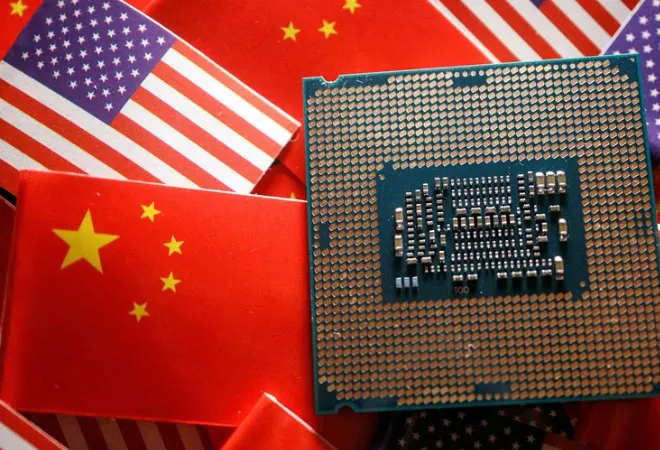-
CENTRES
Progammes & Centres
Location
Apprehensions of China gaining an advantage in the tech rivalry through unfair means weigh heavily on US threat assessments.

The unravelling competition in semiconductors between the US and China is likely to impact the world for two key reasons.On August 9, President Biden signed an executive order addressing US investments in certain national security technologies and products in countries of concern. This decree symbolises the Biden administration’s intensified efforts to prevent both skill and technology leaks to China within the high-tech sector, despite prior measures. Politically, this step underscores China’s role as a consistent factor driving bipartisan consensus in Washington and suggests that President Biden may not be squeamish about cashing in on the ensuing political gains. At another level, this executive order also marks the anniversary of the 2022 Chips and Sciences Act, acknowledging that existing steps fell short in establishing a cohesive ecosystem in the semiconductor industry. Apprehensions of China gaining an advantage in the tech rivalry through unfair means weigh heavily on US threat assessments. An investigation by the United States Trade Representative (USTR) in 2017 revealed that China’s assertive technology strategies put millions of jobs in the US technology industry at risk through its unfair practices, including forced technology transfer. The introduction of the Chips and Sciences Act by the Biden administration in 2022 promptly addresses China’s ability to manipulate tech access and control. This Act committed $53 billion to restructure semiconductor manufacturing, research and development, and the associated American workforce. While the full spectrum of benefits and challenges resulting from this restructuring is still uncertain for the US, some gains have been realised. Domestically, within a year of enacting CHIPS, the Biden administration has achieved significant results. Various US companies have unveiled over $166 billion in investments linked to semiconductor and electronics production. For job creation in the semiconductor sector, the involvement of 50 community colleges located across 19 states to introduce fresh initiatives or extend existing ones appears to be a positive step. Additionally, since the Biden administration took charge, commitments from businesses for semiconductor and electronics ventures in the US have exceeded $231 billion.
China has taken steps to reduce its reliance on the West, particularly the US, in the semiconductor industry.The global repercussions of the chip war between China and the US are much more complex. After the initial strong indications of “decoupling” from China, the US administration has moderated its stance to “derisking,” hinting that a complete breakaway may not be possible. Implicit in this reaction is the acknowledgment that the global semiconductor industry remains dominated by dependencies and partnerships. However, a few countries like Taiwan, the Netherlands, Japan, China, and the US still dominate critical aspects such as resources, production, packaging, and distribution. There is anticipation that a stricter policy against China in this sector could trigger retaliatory policies from China, potentially impacting the US. China has taken steps to reduce its reliance on the West, particularly the US, in the semiconductor industry. In 2015, Beijing announced its Made in China 2025 (MIC 2025) initiative with the aim of increasing domestic semiconductor chip manufacturing to 40 per cent by 2020 and then leaping to 70 per cent by 2025. China has taken measures to limit exports of essential but scarce metals, such as gallium and germanium, crucial for semiconductor production and various cutting-edge technological innovations. China has also banned its companies from sourcing their products from the US semiconductor company Micron. Although both sides have been calculated in their responses to the other’s decision in the chip war, there are gradual divisions emerging that are likely to fundamentally reorder global supply chain connectivity and value chain locations. Meanwhile, there could be some significant gains for India due to a global realignment ensuing from the chip war between the US and China if it prepares its capacities in this area to absorb the spin-offs.
The views expressed above belong to the author(s). ORF research and analyses now available on Telegram! Click here to access our curated content — blogs, longforms and interviews.

Vivek Mishra is Deputy Director – Strategic Studies Programme at the Observer Research Foundation. His work focuses on US foreign policy, domestic politics in the US, ...
Read More +